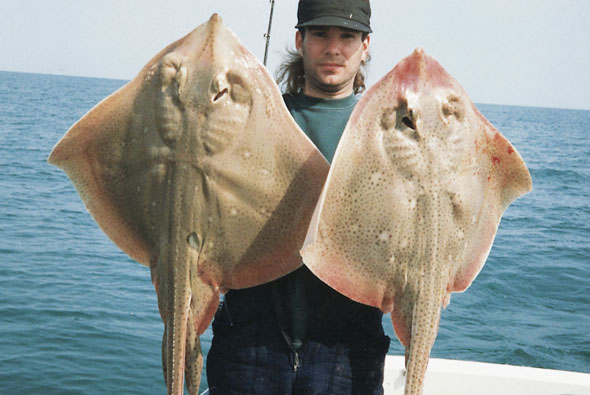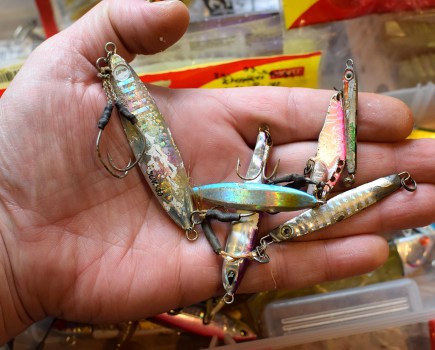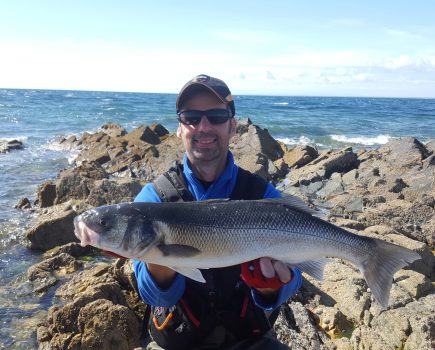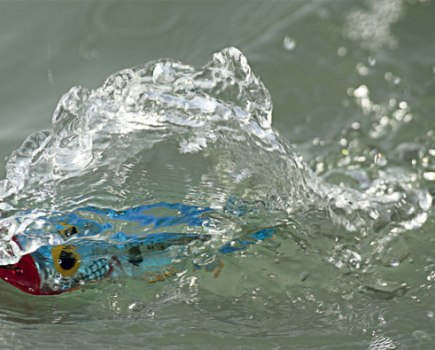While many of us turn our attention solely to cod in winter, there are some specialists who seek big, buxom blondes…
The late Frankie Howerd, would, no doubt, mockingly say “Don’t titter missus”, but while some of you may be falling about laughing at the thought of sidelining cod for ray, I’d like to recall an incident from several years ago. It was February 2002 and Ian Dobson was busy fitting out my latest boat, Sundance. Knowing he was a blonde ray fanatic, I asked: “How did you get on at the weekend?”
“We had 12 blondes on Saturday and 16 on Sunday,” he said; this was a fairly standard reply from Ian, who at the time had 800, yes that many, of the species to his name. Soon after this conversation he smashed the British record with a 38lb 8oz blonde ray.
What that taught me was, not only was he the most dedicated blonde ray angler I know who really deserved the record, but blondes are an all-year fish.
In fact, Ian favoured the winter when most of us go mad for cod fishing. He fished the banks to the south-west of St Catherine’s Point on the south side of the Isle of Wight. The point sticks out into the English Channel, creating tide races that have scoured the sea bed to a depth of 80 metres. The current starts to slow as it gets away from the pinch point of the headland and sediment that has been sucked up begins to settle. This is what builds the banks of sand, gravel and shell grit in undulating waves that generally lay at right angles to the tidal flow.
Look at any headland with a strong current flowing past it and you will find a bank formed downtide. Good examples of this are the Shambles and Kidney banks off Portland Bill and the Skerries near Start Point, Devon.
I fish the banks to the west of the Wight; there are miles of them mostly between three and 12 miles south and west of Atherfield Ledge. On a calm day some of the bigger banks will produce a ripple on the surface as the water is forced upwards by the tidal flow over the bank. By motoring down the tide, while looking at the echo-sounder, you will probably notice a series of smaller banks on either side of the big bank. Turn round and steam uptide far enough to be able to anchor with the boat just uptide of the main bank. In this position you will be able to fish the front face, top and back of the bank, plus the smaller banks downtide by trotting a bait.
Tactics
I DISCOVERED a deadly bait combination from Ian. Although I had had success with squid and sandeel separately, I had not thought to combine them.
Ian rigged a large sandeel on a size 6/0 Pennell rig and tipped it with squid. This rig and combination of flavours is absolute mustard.

A Pennell rig is the standard set up for seeking blonde ray
Although blondes have not got real teeth they have immensely-powerful jaws that will destroy light nylon traces, so I use 100lb mono and certainly would not go under 60lb. Trace length does not need to be too long because rays find it easier to take a fairly static bait that is hard on the bottom, four or five feet is ample.
You can uptide or downtide for blondes. However, one thing to consider when uptiding is that these powerful fish pull like hell when the tide is running and you may not be able to hold them. I have had to let the anchor rope run free to drop back to a ray caught on uptiders on several occasions and it upsets everybody’s fishing until I get the boat back in position, so change to a 30lb-class downtider before the current gets too strong.
Blondes often come on the feed as the tide picks up, so it is most important to make sure that your gear is on the bottom at all times. Quite often, as I look around my boat, I can spot a rod tip straining. By picking up the rod I can let out 30 yards of line before the lead hits the sea bed, which tells me that bait was nowhere near the bottom.
If you feel a bite leave it for a while. Blondes are scent feeders and often the first knocks you feel are the fish searching around trying to locate the bait with its mouth. The eyes are on top of its body, so it cannot see what it is doing. Sometimes they just flop on a bait and stay there eating it. If you have had a couple of tugs and then nothing happens, reel in a little and lift the rod to feel for the fish. If you feel weight you should wind and lift quickly to set the hook.
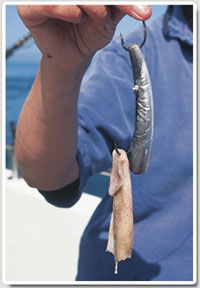
Blondes are the most powerful of the regularly-caught ray and do not fold up in the current like the small-eyed, thornback or spotted varieties. They will use their wingspan in the tide to create enormous pressure on your tackle, not only will you need a good trace but some decent line when the tide is running. I would suggest 30lb braid as a minimum for downtide work and would be happier with 40lb.
Keep the pressure on the fish using short strokes of the rod and quick winding on the reel. In extreme conditions a two-speed reel is an advantage so, of course, is a butt pad.
Fights can be quite prolonged and a real test of the angler’s stamina. Occasionally you get lucky and the fish planes up to the surface some way behind the boat. If this happens just keep winding and it will stay on top. If you pump the rod the chances are that the slack line will enable the blonde to get its head down and dive.
I have a feeling that blondes may be resident on these banks all year round and therefore likely to suffer from overfishing by anglers. I know this has happened on a couple of the popular inshore banks. Taking a medium-sized one for the pot will not make a lot of difference, but put the big ones back for the future.
After all, Ian Dobson’s 38lb 9oz record is within reach.

